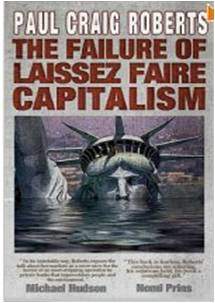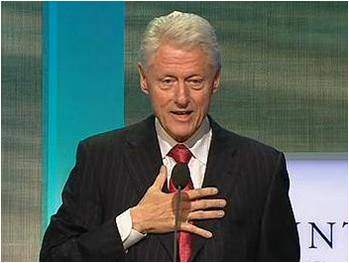Technological Progress for Dummies, Part II
More than One Kind of Nut
by Brian Czech
 “Failure breeds success,” I hope some famous person once said. For I have failed to accomplish the goal set out in Part 1 of Technological Progress for Dummies. The goal was to summarize an article — in plain language and in less than a thousand words — that described why technological progress cannot reconcile the conflict between economic growth and environmental protection. I found I couldn’t do it without several thousand words, and too much plain language is as difficult to digest as a dollop of jargon. As for the article itself, it’s long and full of jargon.
“Failure breeds success,” I hope some famous person once said. For I have failed to accomplish the goal set out in Part 1 of Technological Progress for Dummies. The goal was to summarize an article — in plain language and in less than a thousand words — that described why technological progress cannot reconcile the conflict between economic growth and environmental protection. I found I couldn’t do it without several thousand words, and too much plain language is as difficult to digest as a dollop of jargon. As for the article itself, it’s long and full of jargon.
And now for the successful offspring of such abject failure. (Drumroll, please.) I can successfully say that most folks have tightened a nut or two.
In the old days you would have used a monkey wrench. Then a tidbit of technological progress happened and you had a box wrench, which allowed you to tighten that nut a tad more efficiently. When they finally invented the ratcheting socket wrench, you were really in business. It seemed like you could tighten far more nuts with the same amount of elbow grease; five nuts to one when you threw in some coffee!
Such is the basic pattern of technological progress. Invention and innovation allow you to do more with less. Well ok, maybe not actually “less.” If you tighten five nuts to one, you’re prone to using five times the nuts. And the ratchet set is something you have to add to the toolbox. But you can definitely tighten more nuts without working harder, so in workaday parlance, you’re doing “more with less.” If you want to get technical about it, you could say you’re producing more output per unit input. Your productivity is increasing.
For the economy as a whole, productivity increases with technological progress. It’s an impressive process; nearly awesome at some points in history. It makes us proud of the human race, boosts our confidence, makes us think the sky is the limit. Many are even led to believe we can grow the economy without impacting the environment. After all, if we can do more with less, how about doing more with a lot less?
And why stop there? If we invent and innovate enough, maybe we can do more with no more! We can just keep growing GDP without using any more wood, water, minerals, petroleum — natural resources in general. No more steel, nuts, or tools. No more stuff, no more energy.
It’s reminiscent of the alcoholic announcing, “I’m not drinkin’ any more, but just as much.” We may not be using more natural resources to produce more goods and services, but if we’re still using the same amount we can’t really say we’ve stopped impacting the environment, can we? Especially since we had to dig deeper for the minerals, drill deeper for the petroleum, etc. And notice we haven’t even mentioned the flow of pollution (and won’t, to keep things simpler.)
So it’s time for the really big guns. Now we’re going to produce more, not only with way less, not only with no more, but with nothing at all! We’ll just beam it all up. Why not? After all, research and development expenditures in the United States alone are some $300 billion per year. That oughta buy us out of any problem, including this one! That’s why economists like Robert L. Bradley, Jr. announce, “Natural resources originate from the mind, not from the ground, and therefore are not depletable.”
Now if you’re a scientist worth your stellarator, you can see through the subterfuge in a nanosecond. The first law of thermodynamics tells you there’s no producing something from nothing. You can’t even get perfectly efficient with the resources you do use, because that would violate the second law of thermodynamics. So there’s a limit to technological progress — doing more with less — as it applies to the full collection of materials at our disposal along with the energy we receive from the sun.
The problem remains, however, that for purposes of plain language, the laws of thermodynamics and even the phrase “laws of thermodynamics” don’t cut it. Only in plain language can we make a difference in everyday life and public policy. That’s why President Obama signed the Plain Language Act of 2010.
So here’s some more nuts and bolts. Remember how doing “more with less” leads to five times the nuts? Tell your local Robert L. Bradley, Jr. that we shall all refuse to tighten five times the nuts without five times the bolts and washers, along with additional material to be tightened. And if we’re assembling things for market — quite necessary for GDP growth — we’re now assembling more of them. That leads to more transportation, storage, and retail services. More electricity all around, too, along with the wiring, fuses, bulbs and such. Plus that power plant in the background, with all the nuts and bolts therein.
Now with this type of expansion going on everywhere that the proverbial nuts are tightened (all around the world, in other words), information services help to orchestrate it all. Everybody better have a computer, cell phone, and Twitter feed. Operating at this level, you may as well start advertising, too. Banking, insurance, and other service sectors will also play an expanded role.
Notice that, in addition to not even mentioning the flow of pollution, we also haven’t mentioned the agricultural sector — farming in plain language. But of course we’re going to need plenty of it, to feed all the folks with the manufacturing and service jobs. With all the food they’ll have to produce, they’ll need cell phones and GPS units in the air-conditioned cabs of those 30-foot-wide combines. And plenty of extra nuts and bolts.
So that old ’90’s notion that we could keep growing the “Information Economy” without using more resources — and without any more environmental impact — was like a highly productive conversion of grass into bullpies. All that information, which was supposed to beam us up to Shangri-La, was nothing if not tied into the regular old economy down on the farm and everywhere else in the Land of Nuts and Bolts. The computer was nothing more than the ratcheting socket wrench of the IT sector, which was distributing marching orders for an ever-larger ecological footprint.
At a thousand words now, I’m thinking this is all the success my failure can breed. Enough for one column at least. Someday I may also find a way to convert that earlier-mentioned article, condensing concepts such as niche breadth, trophic levels, and economies of scale into plain language of a thousand words or less, refuting the macroeconomic environmental Kuznets curve and solving the Jevons paradox (which really isn’t so paradoxical) in the process.
But it’ll drive some nuts. In fact, many more nuts, albeit more efficiently.






Here it is in 900 words
EXPONENTIAL TROIKA
By
James T. Dette
In a prescient 1971 essay, “National Economy: How High Is Up?” Professor Herman Daly deplored the received wisdom that robust, unlimited economic growth was not only possible but desirable and suggested in its stead a stationary-state economy where zero growth of population and the economy is not only desirable but necessary to avoid the depletion of our environmental resources. He added that the only disagreements that could exist among reasonable people were (a) what levels of population and wealth to stop at, and (b) how fast to decelerate to zero growth. It is now twenty-nine years since he made his observation, and the developed world, and more and more of the developing world, are pursuing growth of the now global economy as the panacea to our problems. With the trickle-down, rising tide, and invisible hand all will be right with the world.
Three factors in this race to oblivion stand out.
The first is wealth. Since 1971 the Dow Jones Industrial Average (shown on the top of Figure 1) has gone exponentially from what appeared then as an impenetrable 1000-point ceiling to finally bursting through the 10,000-point level as if it was just another ho-hum milestone to. . .where? There is almost a unanimous feeling in the Market that it has no ceiling. A new Internet stock bursts onto the scene with an initial public offering, or just a well-timed press release, and over night the total worth of the company is greater than that of the old reliables that actually make something and show a profit doing it. With respect to economics, I know that the exponential curve we are riding is not, and I hate to use the much-abused term, sustainable.
The second factor in this race to nowhere is population. (This exponential curve is show on the bottom of Figure 1, p3.) Some say that the explosion is over. (Ben J. Wattenberg, The Population Explosion Is Over. New York Times, 11/23/97) If the curve of the developed countries is a harbinger for the rest of the world, there may be a little room for optimism–that is, if we can get the developing countries developed. This will not be an easy task, however, in light of the crash of the Asian Tigers in 1997.
The last horse of the troika I’m examining is the emission of carbon dioxide, the so-called “global warming factor.” The environmentalists have been wringing their hands over this for at least ten years, and rightly so. In spite of industrialists’ self-interested doubts and foot-dragging, the majority of the scientific community believes it’s a very big problem. But to concentrate on the reduction of greenhouse gases is to miss the point. The world’s industrial might is not producing carbon dioxide to create a warmer climate any more than the producers of herbicides, pesticides, and other widely used chemicals are deliberately trying to reduce the sperm count of male animals, including me. The production of carbon dioxide is a by-product of the production of stuff, and the transporting of ourselves and our stuff, from place to place in a most environmentally unfriendly manner.
If global warming were the only concern, we could greatly reduce the production of carbon dioxide by converting all the means of generating electricity to hydro, solar, or nuclear power. (Nuclear and hydro power have a host of their own problems, but the production of carbon dioxide is not one of them.) And we could further reduce the production of carbon dioxide by using natural gas to fuel at the least our mass transportation.
Even if we were successful in making the above changes, we would still be producing and transporting stuff at a prodigious rate, and that is the big problem that we all face and are all a part of. We have got to look at the curve of carbon dioxide production as the basic indicator of stuff production and at global warming only as a by-product.
Consider the curves of population and carbon dioxide emissions: The 1.25 billion people of the developed world are now causing about 4 billion tons of carbon dioxide to be emitted per year. That’s about 3.2 tons per person. If the people of the developing countries were causing the emissions of carbon dioxide at the same rate, the total world emissions would be 18.3 billion tons per year. My graph paper isn’t long enough to accommodate that data point That’s a lot of stuff. It certainly could not happen overnight or in the next generation. But there is no doubt in the minds of those riding the Dow curve that it’s possible, and we are heading there with reckless abandon.
To thwart this race to oblivion we must focus on limiting the production of stuff. Global warming (and maybe population) might just take care of itself. Of course, limiting production means looking hard at a stationary-state economy and the limit to wealth. A commitment to limiting wealth in turn suggests a more equitable sharing of that wealth with its corollary, a simpler life style. This will impose a heavy and delicate demand on our moral resources. Professor Daly concludes his essay: “One thing at least seems clear–a physically stationary economy must be a morally growing economy. If this means that economists should begin to study ethics and theology, then so be it. That is where economics began.”
James T. Dette
Copyright © 1999
22 Duer Place
Weehawken, NJ 07086
JTDette@aol.com